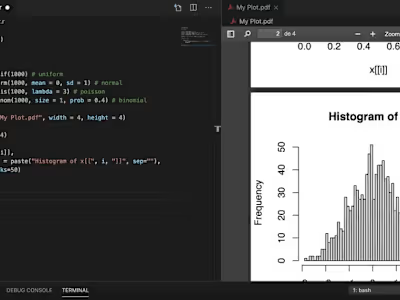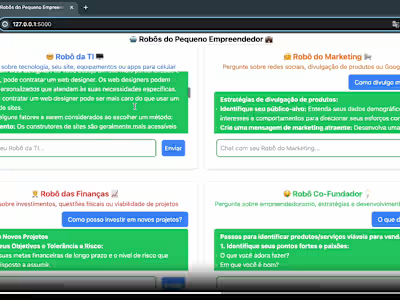Probabilistic networks
Master's Dissertation
DOI
https://doi.org/10.11606/D.45.2014.tde-27062014-224607
Document
Author
Full name
Rodrigo Candido Faria
E-mail
Institute/School/College
Knowledge Area
Date of Defense
Published
São Paulo, 2014
Supervisor
Committee
Wechsler, Sergio (President)
Diniz, Marcio Alves
Kolev, Nikolai Valtchev
Title in Portuguese
Keywords in Portuguese
Diagnósticos
Previsões
Redes bayesianas
Redes probabilísticas
Tomadas de decisões automatizadas
Abstract in Portuguese
Redes probabilísticas são modelos muito versáteis, com aplicabilidade crescente em diversas áreas. Esses modelos são capazes de estruturar e mensurar a interação entre variáveis, permitindo que sejam realizados vários tipos de análises, desde diagnósticos de causas para algum fenômeno até previsões sobre algum evento, além de permitirem a construção de modelos de tomadas de decisões automatizadas. Neste trabalho são apresentadas as etapas para a construção dessas redes e alguns métodos usados para tal, dando maior ênfase para as chamadas redes bayesianas, uma subclasse de modelos de redes probabilísticas. A modelagem de uma rede bayesiana pode ser dividida em três etapas: seleção de variáveis, construção da estrutura da rede e estimação de probabilidades. A etapa de seleção de variáveis é usualmente feita com base nos conhecimentos subjetivos sobre o assunto estudado. A construção da estrutura pode ser realizada manualmente, levando em conta relações de causalidade entre as variáveis selecionadas, ou semi-automaticamente, através do uso de algoritmos. A última etapa, de estimação de probabilidades, pode ser feita seguindo duas abordagens principais: uma frequentista, em que os parâmetros são considerados fixos, e outra bayesiana, na qual os parâmetros são tratados como variáveis aleatórias. Além da teoria contida no trabalho, mostrando as relações entre a teoria de grafos e a construção probabilística das redes, também são apresentadas algumas aplicações desses modelos, dando destaque a problemas nas áreas de marketing e finanças.
Title in English
Probabilistic networks: learning structures and updating probabilities
Keywords in English
Automated decision-making
Bayesian networks
Diagnoses
Predictions
Probabilistic networks
Abstract in English
Probabilistic networks are very versatile models, with growing applicability in many areas. These models are capable of structuring and measuring the interaction among variables, making possible various types of analyses, such as diagnoses of causes for a phenomenon and predictions about some event, besides allowing the construction of automated decision-making models. This work presents the necessary steps to construct those networks and methods used to doing so, emphasizing the so called Bayesian networks, a subclass of probabilistic networks. The Bayesian network modeling is divided in three steps: variables selection, structure learning and estimation of probabilities. The variables selection step is usually based on subjective knowledge about the studied topic. The structure learning can be performed manually, taking into account the causal relations among variables, or semi-automatically, through the use of algorithms. The last step, of probabilities estimation, can be treated following two main approaches: by the frequentist approach, where parameters are considered fixed, and by the Bayesian approach, in which parameters are treated as random variables. Besides the theory contained in this work, showing the relations between graph theory and the construction of probabilistic networks, applications of these models are presented, highlighting problems in marketing and finance.
WARNING - Viewing this document is conditioned on your acceptance of the following terms of use:
This document is only for private use for research and teaching activities. Reproduction for commercial use is forbidden. This rights cover the whole data about this document as well as its contents. Any uses or copies of this document in whole or in part must include the author's name.
Dissertacao_Rodrigo_Candido_Faria.pdf (552.68 Kbytes)
Publishing Date
2014-06-30
WARNING: Learn what derived works are clicking here.
Like this project
Posted Aug 2, 2024
Probabilistic networks are very versatile models. This work presents the necessary steps to construct those networks and the methods used to do so.
Likes
0
Views
9



